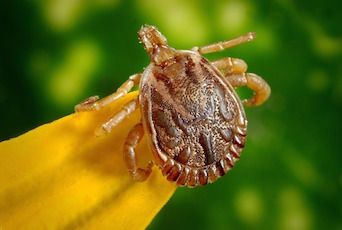CVC Virginia Beach 2017: Tick-Borne Disease Overview
Ticks are expanding in number and geographic distribution across the United States. Here’s how veterinarians can help protect people and pets from tick-borne disease.

A. Rick Alleman, DVM, PhD, CEO of Lighthouse Veterinary Consultants, presented a lecture on tick-borne diseases at CVC Virginia Beach earlier this month. Dr. Alleman provided information on basic tick functions and key features of several important ticks. He also discussed the veterinarian’s role in preventing and reducing tick-borne diseases.
Overall, the number and geographic distribution of ticks have expanded, in part due to climate change. Reservoir animals have also contributed to this expansion by increasing exposure to both ticks and tick pathogens.
In addition to the typical reservoir animals—deer and rodents—domestic and wild dogs are recognized as reservoirs of tick pathogens. Domestic dogs, in particular, can be sources of tick-borne infection for pet owners and veterinary personnel.
Dogs are considered sentinels for tick-borne disease in humans. Seroprevalence studies, for example, have reported the use of dogs as sentinels for such diseases as Rocky Mountain spotted fever (RMSF) and Lyme disease.
Life of a Tick
Understanding a tick’s life cycle is important for effectively preventing tick pathogen transmission, Dr. Alleman said. Ticks can live up to 2 years, landing on and hiding within a dog’s long hair coat or ears. After landing on its host, a tick will search for an ideal place to feed.
Feeding
The tick feeding process is complex. A tick first penetrates the skin with a hypostome, which anchors the tick and allows it to inject saliva into the bite wound and extract blood from the wound. Feeding can take as long as 7 to 10 days, with distention receptors and chemoreceptors signaling when feeding is complete. After feeding, a tick falls off and, in the case of an adult female tick, lays eggs. After laying eggs or molting, a tick will begin feeding again.
Pathogen Acquisition and Transmission
Ticks primarily acquire pathogens during a blood meal, including co-feeding. Co-feeding occurs when, among a group of ticks on a host, one tick injects pathogens that the other ticks then acquire; the host itself may not even have a circulating pathogen at the time of feeding. Most tick pathogens, Dr. Alleman noted, are not acquired through transovarian transmission.
After acquisition, pathogens stay within the tick’s midgut until the next feeding, at which time they migrate to the salivary glands and get transmitted to the host through the saliva. Transmission time varies between pathogens. The goal for tick removal, Dr. Alleman mentioned, is to remove the tick in the window of time between pathogen acquisition and transmission.
Important Ticks
Brown dog tick (Rhipicephalus sanguineus)
- Global distribution
- Prefers indoor habitats and warmer climates
- Pathogens: Ehrlichia canis, Anaplasma platys, Babesia canis
American dog tick (D. variabilis) and Rocky Mountain wood tick (D. andersoni )
- Inflict painful bites
- Pathogens: Rickettsia rickettsii, Francisella tularensis, Cytauxzoon felis
Gulf Coast Tick (Ambylomma maculatum)
- Expanding distribution, including Gulf Coast and East Coast
- Only females have shield on the back
- Pathogens: Hepatazoon canis, ricksettsial agent that causes RMSF-like clinical symptoms in humans
Deer tick (Ixodes scapularis)
- Northeastern and upper midwestern US distribution
- Pathogens: B. burgdorferi and other Borrelia spp, Ehrlichia muris, Bartonella spp, Babesia spp causing human babesiosis, Powassan virus
Lone star tick (Amblyomma americanum)
- Most abundant and aggressive tick, accounting for most human tick bites
- Saliva is very irritating and can cause red meat allergies in humans
- Only females have the lone star mark on the back
- Pathogens: Ehrlichia chaffeensis and ewingii, Panola Mountain Ehrlichia, Borrelia lonestari, Ricksettsia rickettsii, C. felis, various viral agents
Dr. Alleman mentioned that B. lonestari is thought to cause southern tick-associated rash illness (STARI), which mimics Lyme disease. STARI occurs in humans but is not yet known to occur in domestic animals. This organism does not cross-react with B. burgdorferi and has not been cultivated.
The Veterinarians’ Role
Veterinarians, Dr. Alleman said, are well suited to play an important role in the One Health initiative to reduce tick-borne infections. For example, veterinarians screen dogs for tick-borne pathogens. In addition, veterinarians help prevent tick infestation by preventing tick reinfections and educating owners on reducing and preventing tick exposure on their pets and themselves.
Dr. JoAnna Pendergrass received her Doctor of Veterinary Medicine degree from the Virginia-Maryland College of Veterinary Medicine. Following veterinary school, she completed a postdoctoral fellowship at Emory University’s Yerkes National Primate Research Center. Dr. Pendergrass is the founder and owner of JPen Communications, a medical communications company.